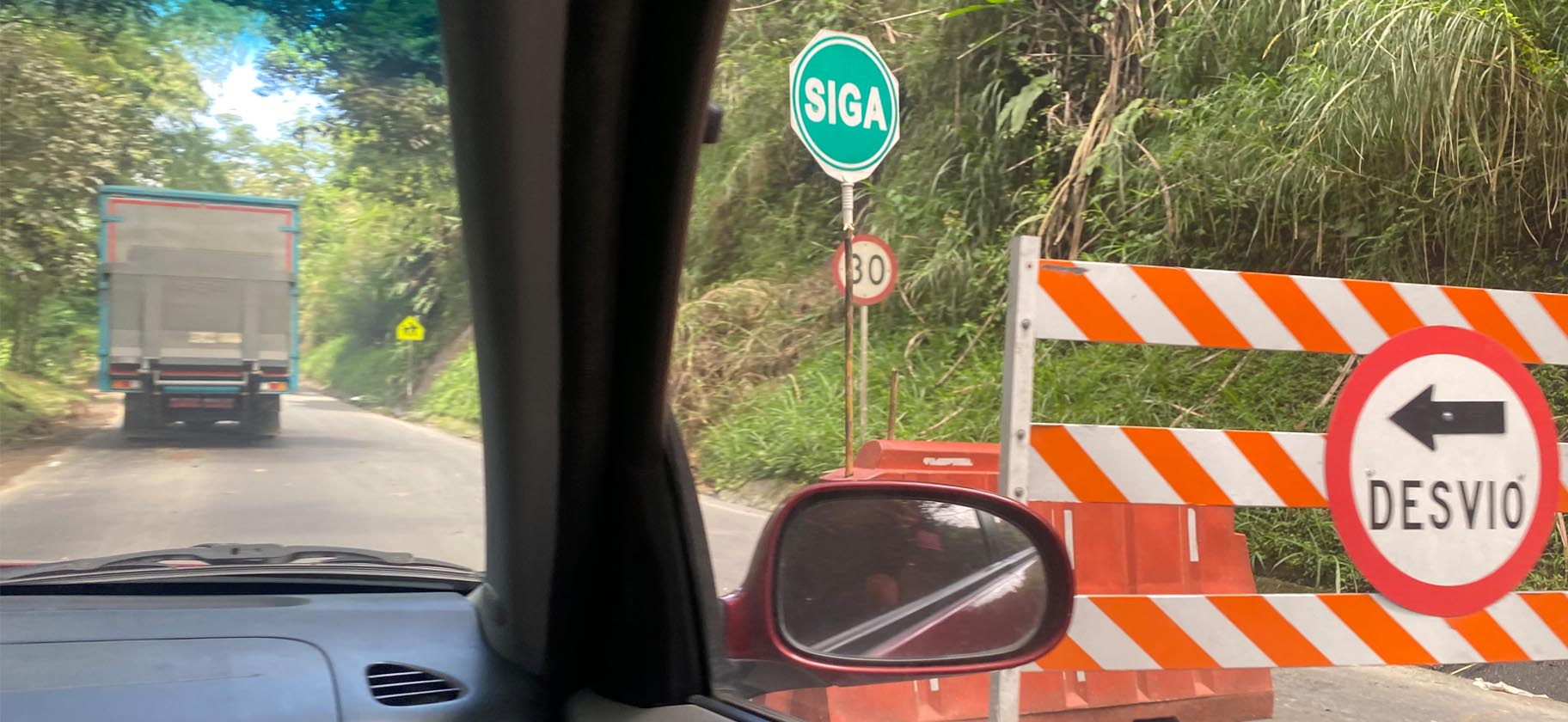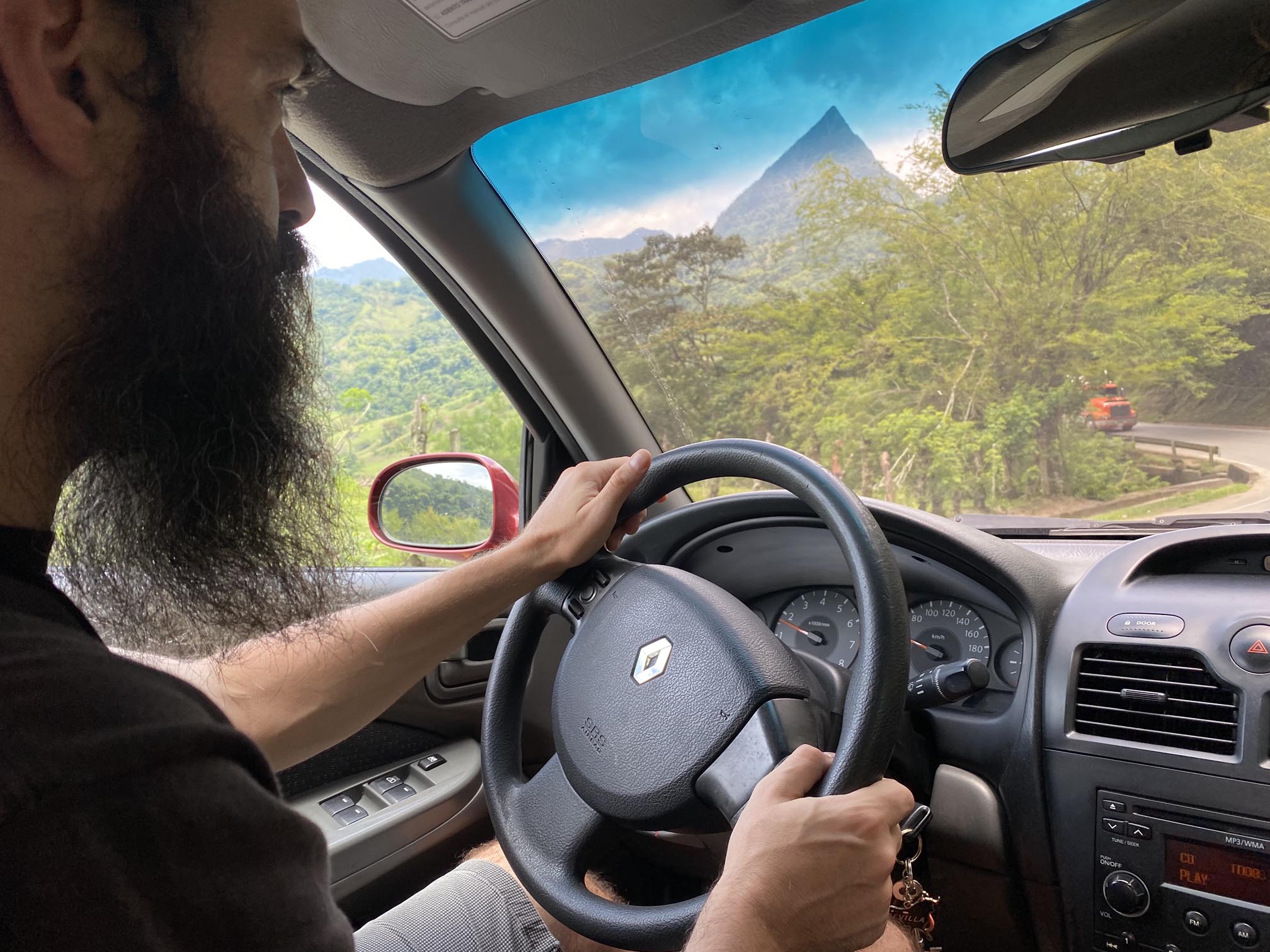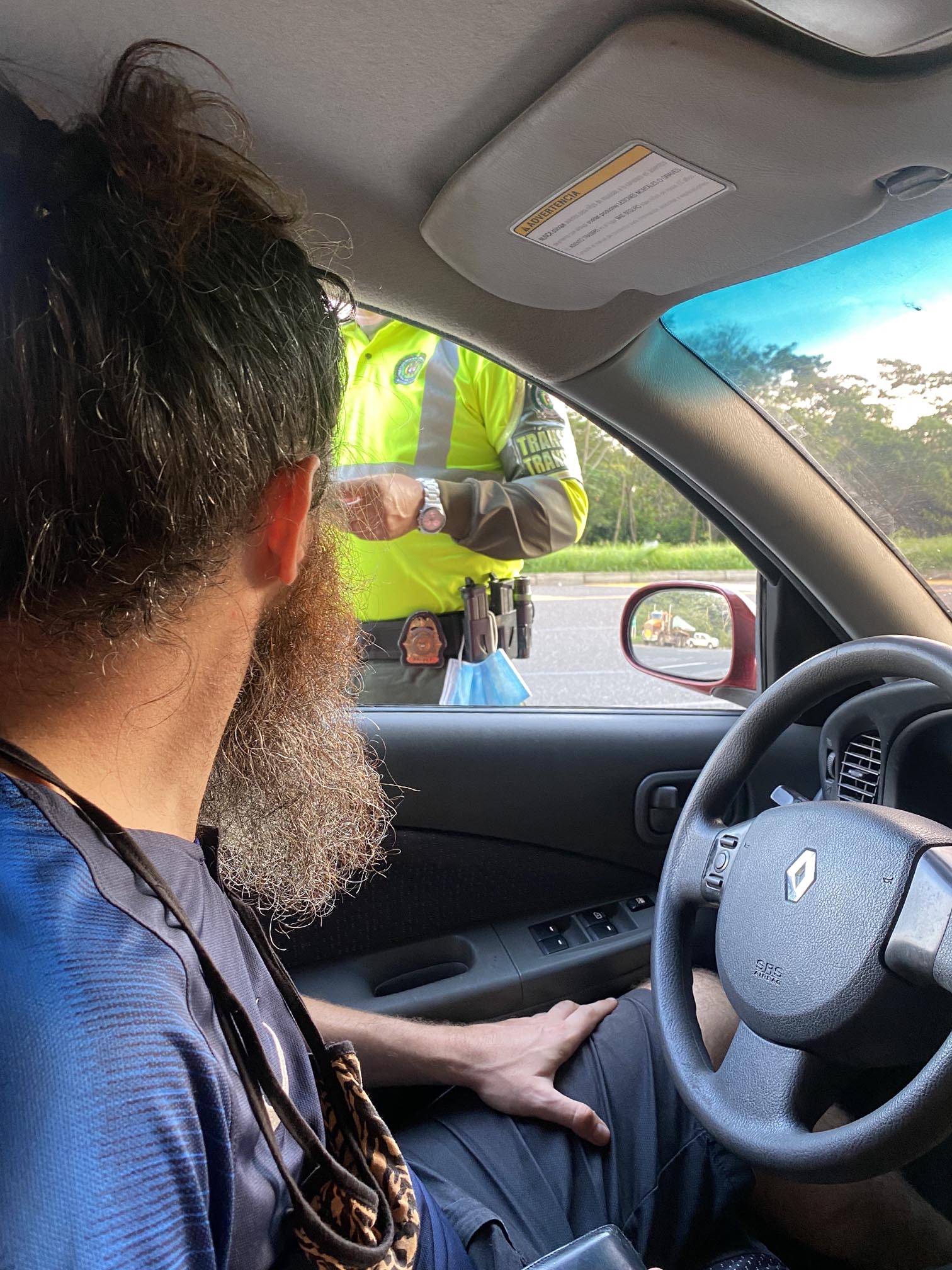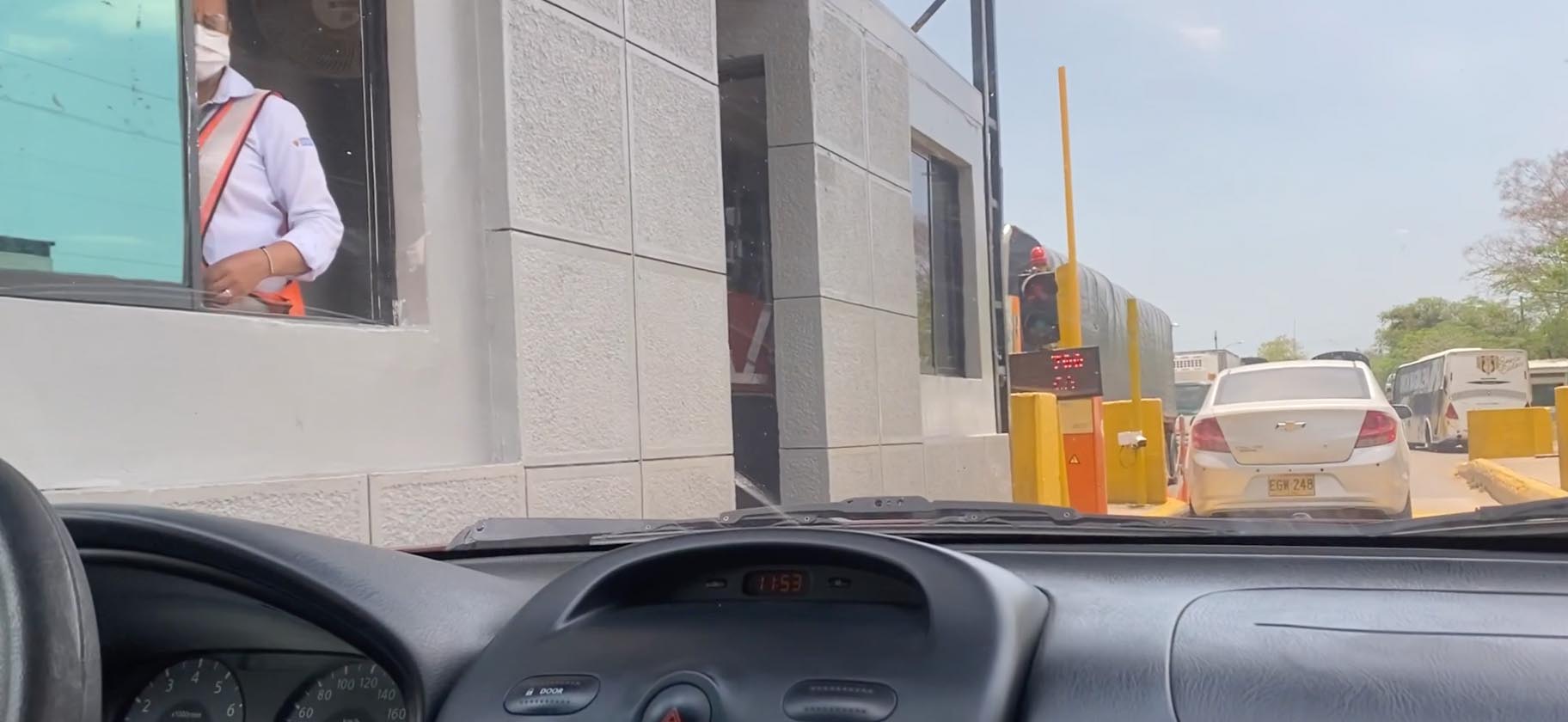Arriero

Nothing moves slower than a Colombian. The reasons for this phenomenon are various. In the north around Cartagena, Santa Marta, and the low-lying swamps around Mangangué and Mompox, the Colombian propensity for lethargy is attributable to the suffocating heat. Footsteps melt into the concrete and the fountain of sweat that seeps through the body will slow anyone down. Colombians of the region, well accustomed to these conditions, even with appointments to keep, never push themselves too hard and, on foot, it may take most of the day to cover the length of a city block. For longer trips, there are taxis that patiently maneuver through the city traffic which does not move much quicker but at least there is air conditioning.
Further south, as one heads into the cordilleras, the sluggish Colombian pace continues but for altogether different reasons. Many of the cities in Central Colombia lie between 1000 and 2500 metres elevation. Their climates are temperate all year round which means the heat cannot be used as an excuse. Instead, at least along the highways, it is these fluctuations in elevation that slow everyone down.
Colombia is modernizing but has yet to develop a network of highways that can swiftly move travellers from one end of the country to the other. Any journey begins by checking Google Maps’ estimate of your arrival at your intended destination and you wondering why you should only expect to average about 30 km/h.
 Part of the problem is Colombia’s geography. Most of the modern routes through Colombia follow the same tracks as the old Arrieros. Better known as muleskinners and recognizable in their distinctive ponchos and straw hats with a machete at their side, from the time of the Spanish occupation, the Arrieros ventured into the hills with their pack animals toting coffee and maize and other tradable goods from town to town. The unmistakable mascot of the Juan Valdez Coffee Company logo, with his trademark mustache, is today a modern symbol of the quintessential folkloric Arriero. Their legacy persists in Colombia’s network of roads. Much of Colombia is challenging terrain and the roads left behind by these old muleteers wind to-and-fro up through the hills and down through the glades along a route designed for donkeys – not for automobiles. Back then, the force of the modern combustion engine could scarcely be conceived and sappers have yet to blast their way through mountains and engineers have yet to lay concrete in a fashion that could make a straight line the quickest route between two points.
Part of the problem is Colombia’s geography. Most of the modern routes through Colombia follow the same tracks as the old Arrieros. Better known as muleskinners and recognizable in their distinctive ponchos and straw hats with a machete at their side, from the time of the Spanish occupation, the Arrieros ventured into the hills with their pack animals toting coffee and maize and other tradable goods from town to town. The unmistakable mascot of the Juan Valdez Coffee Company logo, with his trademark mustache, is today a modern symbol of the quintessential folkloric Arriero. Their legacy persists in Colombia’s network of roads. Much of Colombia is challenging terrain and the roads left behind by these old muleteers wind to-and-fro up through the hills and down through the glades along a route designed for donkeys – not for automobiles. Back then, the force of the modern combustion engine could scarcely be conceived and sappers have yet to blast their way through mountains and engineers have yet to lay concrete in a fashion that could make a straight line the quickest route between two points.
Colombia’s circuitous roads are only part of the problem, one also has to factor in what is riding on those roads. Trucks tend to be the most frequently spotted mode of transportation and they are unable to move swiftly up even the softest grade. Along a two-way highway, an upward trajectory in one direction means a downward trajectory in the other and with each curve in the mountain occurring at every hundred metres that makes trying to pass a fleet of trucks a risky enterprise – still, many try. As evidenced by the growing number of memorial sites that line the highways, not everybody is successful. The average Colombian driver has inherited a degree of prudence that would remind anyone that arriving someday is preferable to not arriving at all.
Gasoline in Colombia is cheap compared to the rest of South America meaning that, besides the trucks, most Colombians do not shy away from being on the road. Complicating matters are the fleets of motorcyclists travelling up and down the country on their own quests and for whom the normal rules of traffic do not apply.
National highways link major cities and most pass right through where traffic is often its densest which means that navigating through cities and towns can be laborious due to congestion. Getting from one end to the other of even a small town is not without its challenges and the populations of these small pueblas can be deceptive. Speed bumps do their share to slow traffic as much as the hordes of shoppers and pedestrians that spill out into the middle of the road at all hours of the day. Even between these small towns, there are obstacles to avoid like herds of cattle or packs of stray dogs.
 If you somehow manage to shift into fifth gear along a straight line of open highway, you can be sure to eventually hit a line of cones placed down the centre of the road by national police. Colombia is composed of over 30 administrative divisions and the control point is yet another part of the daily driving experience. Some police allow just about every car to roll through while some stop most everything on the road. Drivers can be asked to present documents for themselves and the car, explain where they are coming from and where they are going, and sometimes police may even inspect the automobile to find what folks are carrying. Besides slowing traffic, a single control check can last from a few seconds to several minutes.
If you somehow manage to shift into fifth gear along a straight line of open highway, you can be sure to eventually hit a line of cones placed down the centre of the road by national police. Colombia is composed of over 30 administrative divisions and the control point is yet another part of the daily driving experience. Some police allow just about every car to roll through while some stop most everything on the road. Drivers can be asked to present documents for themselves and the car, explain where they are coming from and where they are going, and sometimes police may even inspect the automobile to find what folks are carrying. Besides slowing traffic, a single control check can last from a few seconds to several minutes.
The most confounding factor of Colombia’s sluggish nature is the state of its infrastructure. Colombia’s roads, whether looping along the contours of a mountain or headed in a straight line, can ride anywhere between a pristine polished carpet or a broken jagged dirt track. At startlingly brief intervals, toll booths have been erected as a means to pay for the maintenance of these roads and the cost of a 200-kilometre trip can add up fast. What is most perplexing is arriving at the end of a 30-kilometre stretch of dirt and paying 20,000 pesos and then wondering for the next 30 kilometres along more dirt what it was that you just paid for.
In addition to these attempts to maintain the roads are the just-as-perplexing roadworks that occur in the tiniest of villages that line the highways. These small economies will do just about anything to bring more money into their village. At one end of the village, one side of the highway will be blocked by a not-so-official-looking construction worker holding a sign reading ‘stop’ on one side and ‘go’ on the other. Rocks will have been laid on one side of the road through the village and at the far end is another construction worker whose job is to stop cars or let them pass. No workers are visible on-site actually working on the road. Traffic in one direction is allowed to pass while cars pile up and wait on the far side. As the cars on one side begin to queue, the villagers make their way along the line carrying oranges, guama, biscuits, local cheeses, water, cola, and anything else they might be able to sell that day. When the villagers get to the end of the queue, they turn around and head to the far side of the village where, conveniently, the construction workers have turned their signs around switching the flow of traffic. Depending on the amount of traffic and the size of the village, waiting in one of these village highway queues can last as little as a couple of minutes to well over an hour.
Patience has been chiselled into the Colombian psyche over centuries. Despite the prevalence of so many stimulants from coca to coffee, all of Colombia’s invigorating substances serve only to bring its people to what would seem like baseline to the uninitiated. The slow road to everywhere is in the blood of every Colombian ancestor passed down over centuries from the old arrieros. Bureaucracy cannot be circumvented and appointments are helpful guides that need not be adhered to with much precision; No one else’s priority should exhaust another’s sense of comfort and well-being; No meal should be eaten in a time longer than it took to serve; no journey should ever be undertaken with more haste than caution. Tranquilo.
